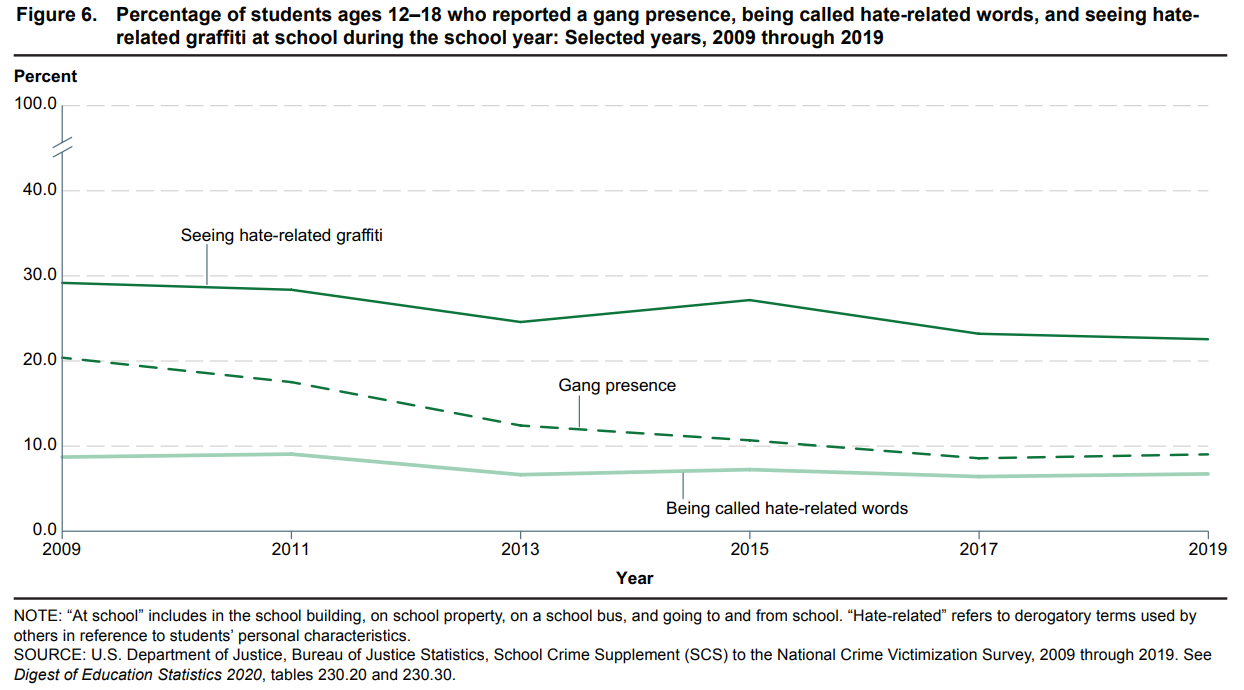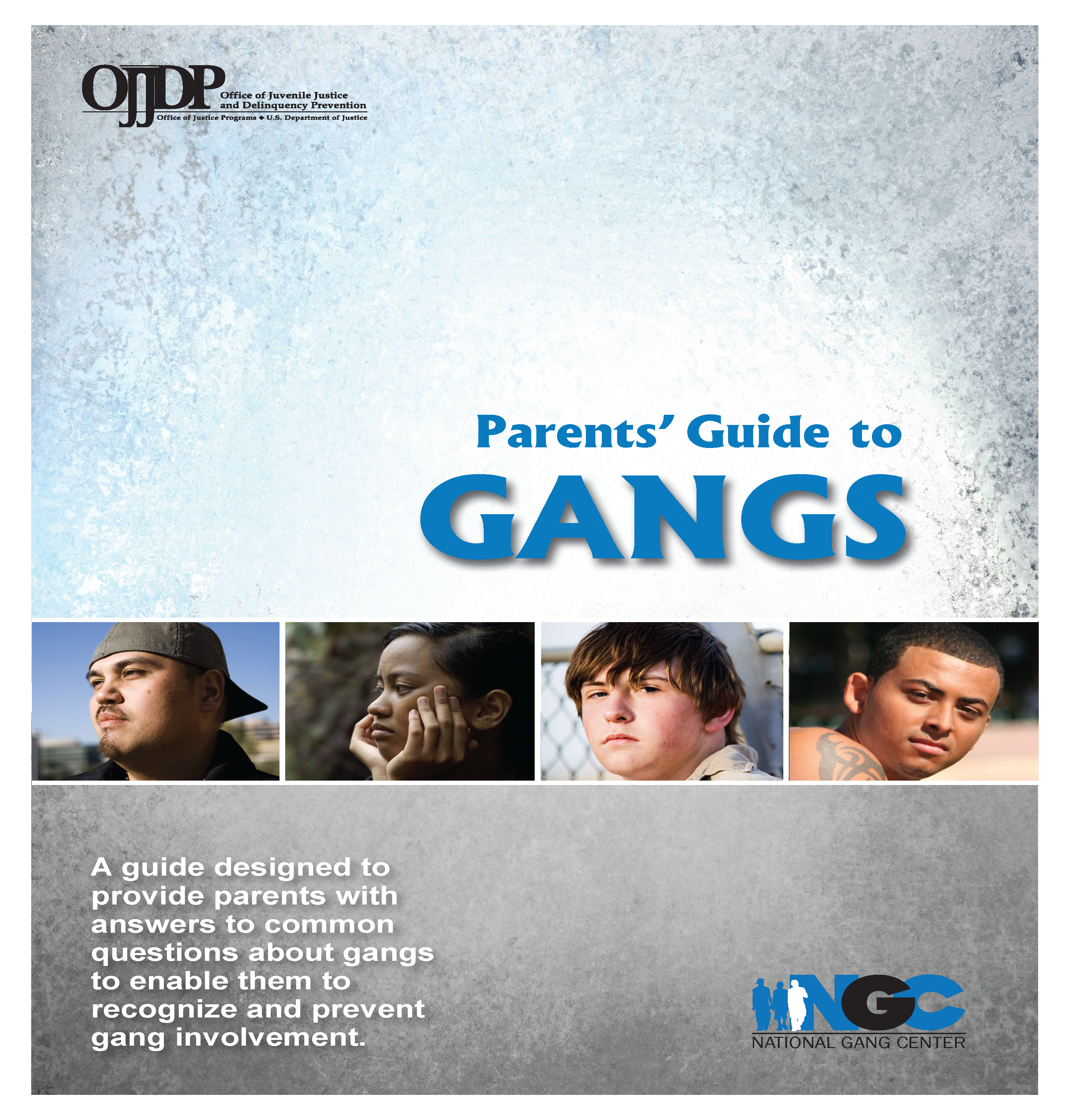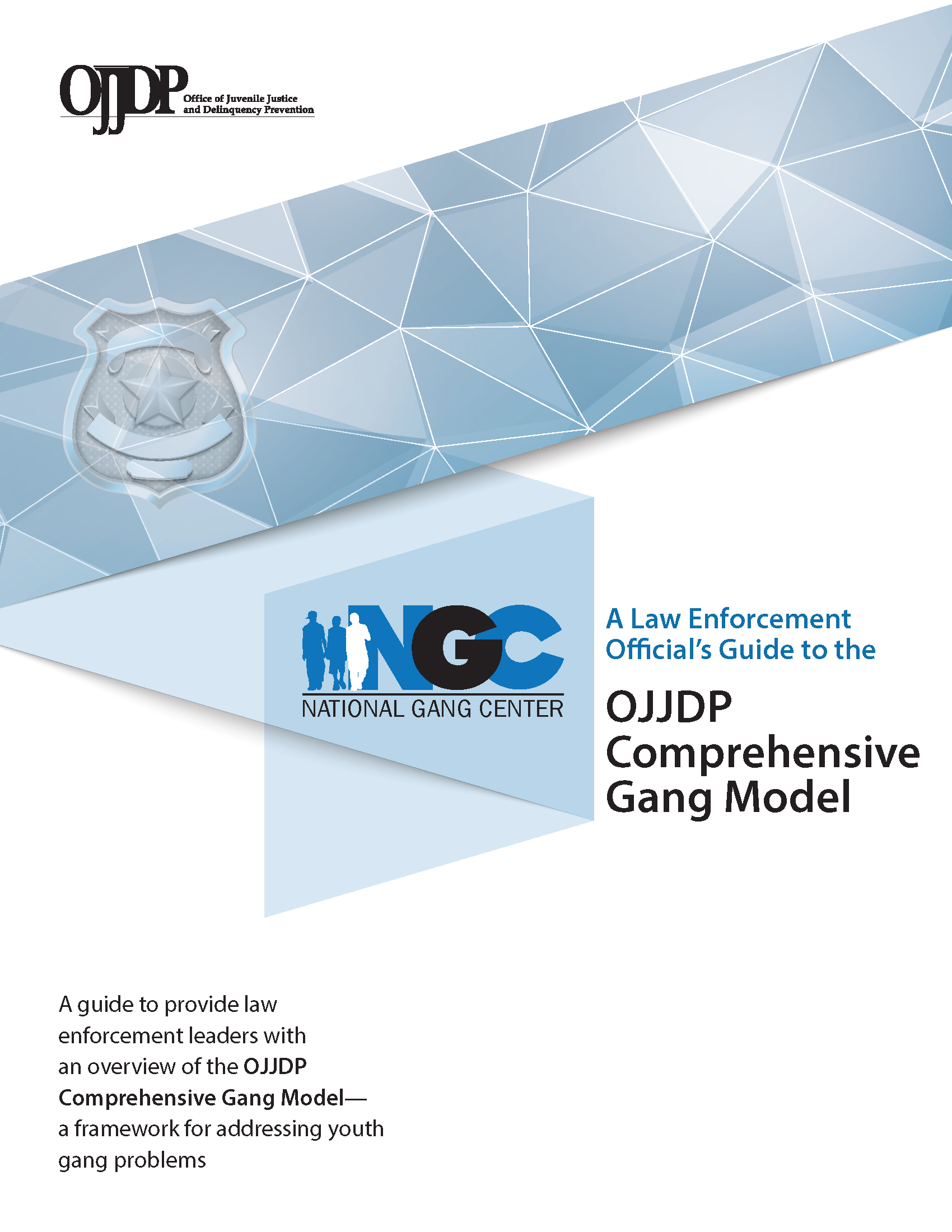Gangs are defined in many ways. The federal definition of a gang is a group of three or more people organized, in part, to engage in criminal activity and who identify themselves with a common name or sign.
Why do Youth Join Gangs?
Some youth believe that joining a gang will protect them from neighborhood crime and violence. However, research shows that gang-involved youth are actually more likely to be victims of violence and more likely to commit crimes, leading to higher rates of arrest and incarceration.
Growing up in a violent family environment and experiencing school-related problems, such as academic failure and negative labeling, have been identified as risk factors for youth joining a gang. Also see this video "Why Do Youth Join Gangs," which features gang researchers, practitioners, and young people who were previously involved in gangs.
Gangs in Schools
The presence of gangs in schools is declining. In 2019, about 9% of students ages 12-18 reported a gang presence at their school—down from 20% of students in 2009, according to the 2021 Report on Indicators of School Crime and Safety
Addressing gang issues in a school environment requires the involvement of law enforcement personnel, school administrators and staff, and other key sectors of the community. The "Responding to Gangs in Schools: A Collaborative Approach to School Safety," guide from the National Gang Center, is designed to provide schools and law enforcement with sound practices and collaborative techniques to identify, assess, and address gang activity in the school setting.
Consequences of Joining a Gang
Consequences of youth gang involvement also include failing to graduate high school, becoming a teen parent, and being unemployed. Although youth are usually gang members for only a year or two, the negative impacts—including family problems, poor physical and mental health, substance use, and continued involvement in crime—last far into adulthood.
How to Prevent Gang Involvement
Parents play a key role in preventing children from joining a gang. Steps parents can take include talking about the negative consequences of gang behaviors, getting to know their child’s friends, asking about online activities, spending time together as a family, and using positive and consistent discipline.
With support from the Office of Juvenile Justice and Delinquency Prevention (OJJDP) and the Bureau of Justice Assistance, the National Gang Center disseminates information, knowledge, and outcome-driven practices that engage and empower local communities to prevent gang violence, reduce gang involvement, and suppress gang-related crime. The National Gang Center’s Parents’ Guide to Gangs answers common questions about preventing gang involvement.
OJJDP's Comprehensive Gang Model is a set of five core strategies—community mobilization, opportunities provision, social intervention, suppression, and organizational change and development—that offer a comprehensive, collaborative approach designed to prevent and reduce gang violence.
The model provides a framework for coordinated action that improves a community's capacity to prevent youth from joining gangs and reduce street gang crime and violence, whether emerging or entrenched.
Additionally, research supported by the National Institute of Justice found encouraging results for adapting a delinquency prevention program to prevent youth involvement in gangs and reduce the criminal activities of gang members.
Gangs in Prison
In prisons throughout the country, gangs are responsible for a disproportionate amount of misconduct and violence. Their presence and actions challenge efforts to maintain order and safety. Many U.S. prison systems have cited restrictive housing as a successful way to reduce gang violence, although it is a controversial practice. A review of the evidence suggests that the justification for the wholesale placement of gang affiliates in restrictive housing is limited. The evidence suggests that restrictive housing may reduce rule-violating behavior. But the full range of consequences, both beneficial and negative, of restrictive housing must be weighed when considering the wisdom of its continued use.
More on Gangs from OJP
Visit the following pages for additional information and resources produced or sponsored by the Office of Justice Programs and other federal agencies:
| Gangs: Prevention | Gangs: Response |





